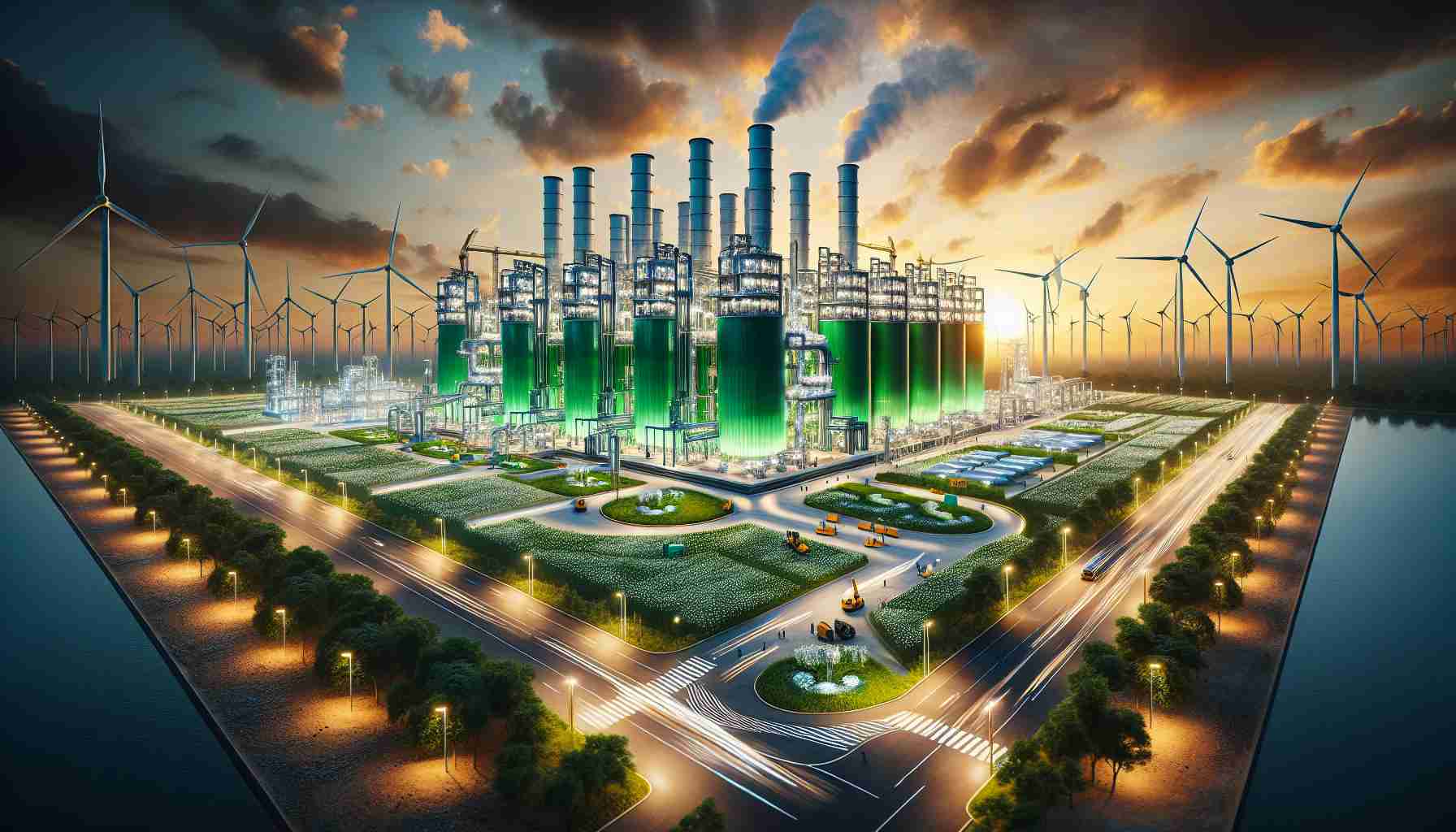Unveiling India’s First Green Hydrogen Hub
In a groundbreaking move, India has initiated its first green hydrogen hub, accompanied by a hefty investment of $21.6 billion. This ambitious project aims to harness 20 GW of renewable energy while producing a staggering 1,500 tons of green hydrogen daily, alongside 7,500 tons of sustainable derivatives each day. Situated in Andhra Pradesh, this initiative is spearheaded by NTPC Green Energy Ltd., a subsidiary of the national power company NTPC Ltd.
Prime Minister Narendra Modi recently highlighted the significance of the hub, emphasizing its role in achieving India’s target of 500 GW of non-fossil fuel energy by 2030. The project is also projected to attract approximately $2.15 billion in additional investments in the region.
Following this, another hub in Rajasthan will focus on generating 25 GW of renewable energy, with plans to disclose further details soon. The Andhra Pradesh hub, expected to be operational by 2027, will feature advanced facilities like electrolyzers, fuel cell manufacturing units, and chemical storage terminals.
With solar power being integral to this venture, bids for associated projects are underway, drawing interest from both local and international firms. Significant players like Toyo Engineering Corp. and Air Liquide are exploring collaborative opportunities in this burgeoning green hydrogen market, indicating a promising future for India’s energy landscape.
Wider Implications of India’s Green Hydrogen Hub
The launch of India’s first green hydrogen hub marks a pivotal moment not just for the nation, but for global energy dynamics. By investing heavily in green hydrogen production, India positions itself as a front-runner in the renewable energy sector, potentially challenging established powers in Europe and North America. As countries pivot towards sustainable practices, India’s initiative could inspire similar projects, generating a ripple effect in renewable energy adoption worldwide.
The cultural shift towards sustainable practices is also noteworthy. With Prime Minister Narendra Modi leading the charge, green hydrogen becomes emblematic of a national ethos that prioritizes innovation and environmental stewardship. The initiative promotes a narrative of progress rooted in technology and sustainability, influencing public perception and encouraging societal buy-in for green technologies.
Environmentally, the successful implementation of green hydrogen could lead to a significant reduction in carbon emissions, crucial for combating climate change. As India aims for its ambitious target of 500 GW by 2030, the demonstrated benefits of green hydrogen may solidify its role as a sustainable energy source, influencing global energy policies.
Looking ahead, this hub may catalyze investments in complementary technologies and infrastructure, fortifying the green hydrogen ecosystem. As collaboration between private firms and the infrastructure sector deepens, the emergence of a vibrant market for green hydrogen could reshape energy consumption patterns, ultimately fostering a more sustainable global economy.
India’s Green Hydrogen Revolution: Expected Transformations and Innovations Ahead
Overview of the Green Hydrogen Hub Initiative
India’s commitment to green hydrogen has taken a significant leap forward with the establishment of its first green hydrogen hub in Andhra Pradesh. This initiative, backed by a substantial investment of $21.6 billion, aims not only to produce 1,500 tons of green hydrogen daily but also to generate 20 GW of renewable energy—signifying a bold step towards sustainable energy solutions.
Key Features and Innovations
The hub is set to include cutting-edge technology and infrastructure, notably electrolyzers and fuel cell manufacturing units, which are crucial for the production of green hydrogen. The integration of chemical storage terminals will further enhance operational efficiency, allowing for robust management of energy resources.
# Expected Outcomes of the Project:
– Daily Production Goals: Targeting the production of 1,500 tons of green hydrogen and 7,500 tons of sustainable derivatives.
– Energy Generation Capacity: The hub aims to harness 20 GW of renewable energy, a major contribution to India’s energy matrix.
– Operational Timeline: The facility is expected to become operational by 2027.
Benefits and Prospects
# Economic Impact:
The project is anticipated to create significant job opportunities and attract around $2.15 billion in supplementary investments. This economic boost is vital for local communities and the wider region, promising both direct and indirect employment avenues.
# Sustainability:
This venture reflects India’s increasing focus on sustainability, aligning with the country’s goal of reaching 500 GW of non-fossil fuel energy capacity by 2030. By reducing reliance on fossil fuels, India aims to decrease its carbon footprint and enhance energy security.
Comparison: Andhra Pradesh vs. Rajasthan Hub
While the Andhra Pradesh hub is set to be a benchmark for green hydrogen production, a second hub in Rajasthan will target an even larger capacity of 25 GW. The contrasting approaches may offer compelling insights into different strategies for scaling renewable energy projects in India.
Market Trends and Collaborations
The burgeoning green hydrogen market in India is attracting attention from both local and international firms. Companies such as Toyo Engineering Corp. and Air Liquide are exploring partnerships, indicating a trend towards collaboration in technological advancements and resource sharing.
Limitations and Challenges
Despite the ambitious plans, several challenges remain, including:
– Technological Hurdles: The development and scaling of electrolyzers and other necessary technologies must progress swiftly to meet production goals.
– Infrastructure Development: Building the required infrastructure for energy transmission and storage is crucial for project success.
– Investment Risks: Economic uncertainties could impact investment levels and the overall success of the project.
Insights into Future Innovations
Looking ahead, the green hydrogen hub initiative is poised to revolutionize India’s energy landscape. Innovations in energy capture, storage, and distribution are expected as the industry grows. The project underscores India’s strategic positioning in the global green energy market.
Conclusion
India’s inaugural green hydrogen hub represents a significant milestone in the transition to sustainable energy. As the project progresses, it could serve as a model for future initiatives worldwide, emphasizing economic growth, environmental responsibility, and energy independence.
For more information about India’s energy initiatives, visit NTPC.


